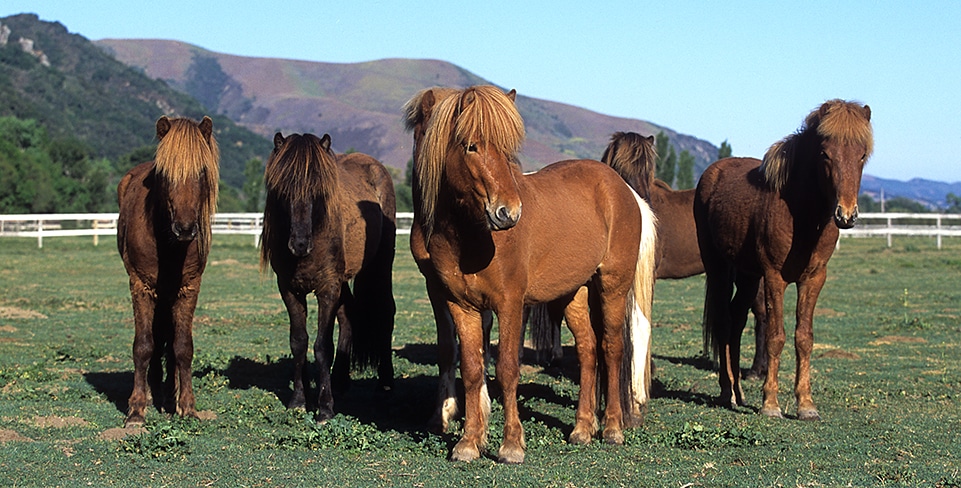When Norse settlers arrived in Iceland around 1,000 years ago, they brought their best horses with them. Difficult living conditions over the centuries since have adapted the breed, making it extremely hardy and long-lived. In the 1780s, the breed was nearly obliterated following a volcanic eruption at Laki.
The Föderation Europäischer Islandpferde Freunde (FEIF) was started by Icelandic Horse enthusiasts in 1969. Icelandic law prevents any other horses from being imported into the country and exported animals are not allowed to return. Today the breed has organizations and breeders in 19 different countries; Europe has close to 80,000 Icelandics and there are roughly 2,000 in North America.

Despite standing between 12-13.2hh and occasionally reaching 14.2hh, Icelandics are categorized as horses.
Characteristics
Although often pony-sized, standing between 12-13.2 hands and occasionally reaching 14.2 hands, Icelandics are categorized as horses. In fact, there is no word for ‘pony’ in the Icelandic language.
The Icelandic sports a medium-length head, pricked ears, eloquent and soft eyes, a broad chest, stocky and powerful body and legs, and incredibility hard feet. The breed is very tough and can live outside year-round; their long lifespans commonly see them working until they are 30.
In addition to walk-trot-canter, the Icelandic Horse has two additional gaits: the tølt (a four-beat running walk that is as fast as a canter and very comfortable for riders) and the flying pace (a gait that has two beats and is commonly used for racing).
The breed comes in all solid colours in addition to skewbald, palomino, grey, and dun. A colour that is especially treasured is silver dapple.
Uses
The Icelandic’s easy-going, friendly disposition makes it the ideal family companion. They are commonly used as children’s riding horses or for trekking, as well as traditional sheepherding work and racing in its native country.
For more information, visit:
International Federation of Icelandic Horse Associations
Canadian Icelandic Horse Federation


